Continental shift
Continental showcases its latest innovations and solutions for the future of mobility at the Continental Technology Show 2019, Hanover, Germany
Smart connectivity, telematics and advanced safety systems were aplenty at the Continental Technology Show 2019, which reveals how the technology major is making a planned and judicious shift into the disruptive future of mobility.
The sight of vehicles zipping at extremely high speeds on an autobahn is clue enough to decipher how progressive and advanced Germany already is in terms of its mobility ecosystem. There are no speed limits and safety is ensured with utmost driver maturity behind the wheel. Yet, this country is billing for autonomous driving so that safety on its roads gets even more pronounced.
I am in Hanover to attend Continental's Tech Show 2019 and headed to the ADAC Driving Safety Centre in Laatzen, where I am promised an experiential day at some of its futuristic solutions, not just safety related but also encompassing the entire gamut of transformative automotive technologies. It was all about seeing tomorrow today.
Before we got down to the practical bits, there was a session lined up with Continental's global CEO Dr Elmar Degenhart, who focused on Continental's vision of zero accidents, zero emissions and zero stress as a plethora of smart connectivity and telematics-based features increasingly underline cars of the present day. "Technology is our strength and is an area in which Continental has an outstanding level of expertise. In the past year alone, we have invested more than 3 billion euros (Rs 23,250 crore) in research and development for the next generation of mobility. A significant portion of this amount will go towards technologies for in-vehicle functions," he said.
One result of the company's research is intuitively designed operating systems. Simple communication between the driver and the vehicle with the aid of an intelligent voice-activated digital companion and three-dimensional displays increasing acceptance of new vehicle technologies.
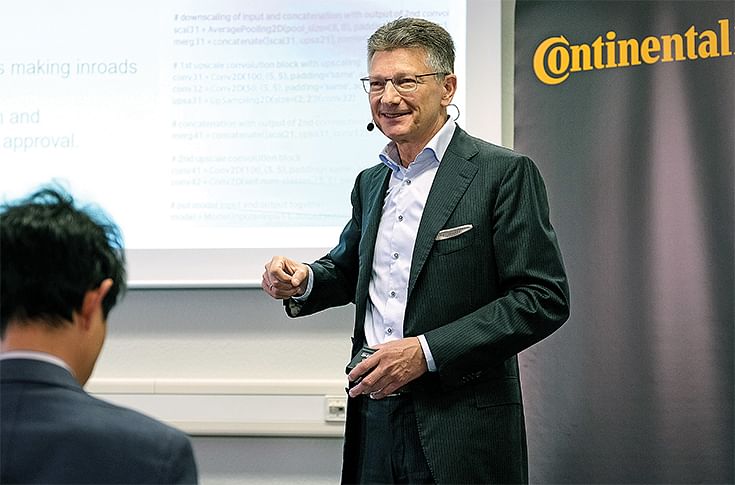
Dr Elmar Degenhart: "We have to find ways to allow safe use of connectivity features inside a moving vehicle and it is going to be defined by software."
"We have to find ways to allow safe use of connectivity features inside a moving vehicle and it is going to be defined by software. Software is the most critical area for companies in the automotive industry to excel in the coming years," said Dr Degenhart. Interestingly, Continental has one of its biggest R&D centres in Bangalore with over 3,000 engineers writing millions of lines of code to drive these very contemporary electronic systems.
The company, along with China's Nuance, is working on an adaptive voice-activated digital companion that reacts to natural speech and is precisely adapted to vehicle conditions. This makes operations easier and the driver does not have to take his/her eyes off the road, thus reducing the risk of accidents.
Dr Degenhart showed an estimation that software content in a vehicle is set to grow manifold over the next decade. While hardware still remains the largest contributor to revenues in vehicle architecture, all that is set to shift towards software and software as a service (SaaS) opportunities. While hardware will marginally grow from US$ 2,470 billion today to US$ 2,600 billion in revenues for automakers, the software will rise six times to US$ 1,200 billion in 2030 from the current US$ 220 billion. Moreover, cloud services and SaaS is also set to grow to $ 1,500 billion, a 50-fold increase from the current level of $30 billion.

Collaboration with Silicon Valley's Leia and China's Nuance has seen Continental bring out natural 3D displays and a voice-activated in-vehicle assistant.
Furthermore, development of Continental's first worldwide 5G solution for a vehicle manufacturer is already underway. On this new platform, the company is combining the features of fifth-generation cellular communications with technologies for short-distance radio for direct data exchange between different vehicles and the infrastructure. The vehicles 'talk' to each other faster than ever before, with fewer interruptions and thus are able to warn each other, for instance, of accidents behind a bend or about traffic jams ahead.
With latency coming down to its lowest with the oncoming of the 5G network, the direct possibility of this fast communication technology is also in the areas of autonomous driving and driver assistance systems.
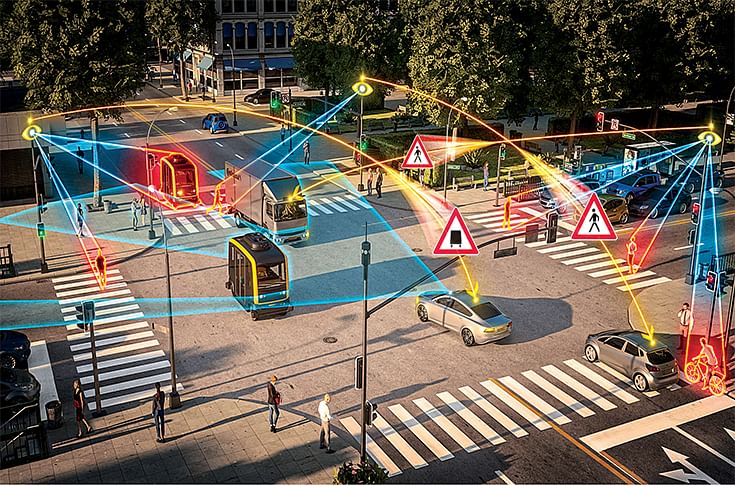
Extrapolation of multiple sensors and roadside units for I2V communication. Continental aims to reduce hazardous traffic situations at intersections with ongoing pilot projects.
Continental showcased its innovative predictive ESC technology and its CUBE (Continental Urban Mobility Experience), a fully autonomous shuttle service for last-mile connectivity. Sure, these solutions will most likely find their place in a country as advanced as Germany, but will it be the same for India?
Smart voice assistant
As digital habits increasingly push carmakers to bring connected devices inside cars, the use of touchscreen infotainment systems is on the rise among OEMs globally. So much so that screens have replaced 2-DIN systems and within screens, the race is towards implementing the biggest displays ever.
This trend is also driving in the direction of ensuring occupant engagement in an autonomous vehicle, wherein the human mind needs to be diverted somewhere if it's not engrossed in the driving part. With its smart voice-activation function, Continental showcased an intelligent speech assistant that focuses on the most natural means of communication — the spoken word, and is able to communicate like a human.
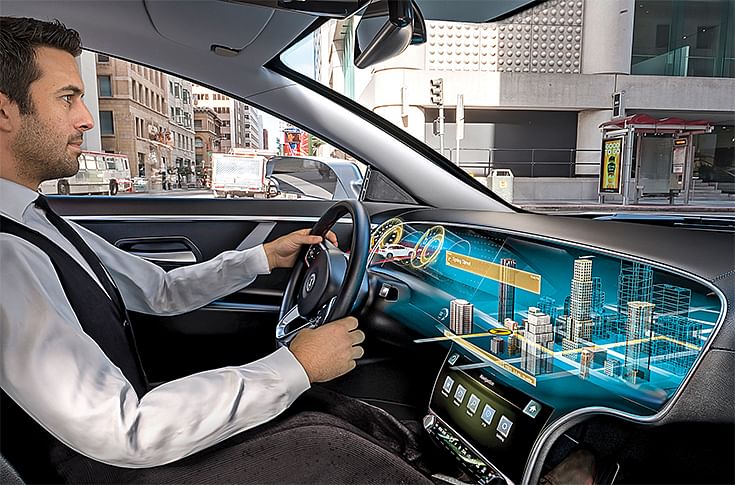
Natural 3D display uses diffractive lightfield tech to offer ultra-high resolution; lightfield displays are billed as next-generation mediums allowing comfortable perception of 3D depths, rendering of highlights, sparkles and other complex light effects.
Developed in collaboration with Chinese speech recognition specialist Nuance, the voice-activated assistant, which wakes up to the name 'Companion', offers natural language understanding powered by an efficient and easy to use dialogue development platform.
With natural dialogue design, the capability to understand multiple questions in one sentence, and with its capacity to detect logical connections, the assistant can learn and adapt to user behaviour, preferences and context.
Function-wise, Companion can run a diagnosis check in the car, inform about flat tyres, detect a malfunction and also automatically book an appointment slot at the service workshop! The system uses both cloud-based and embedded text-to-speech engines and is able to work offline as well.
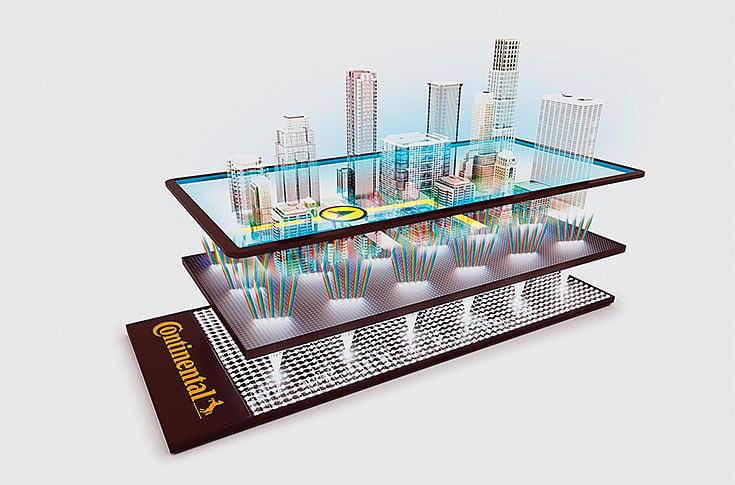
Continental says that it is a modular system with the flexibility to exchange key components and that user's private as well as the vehicle's data will always remain secure.
Smart intersections in smart cities
Taking the power of connectivity a step further, Continental showcased its range of smart city technologies developed for creating an intelligent infrastructure — intelligent intersections and intelligent street lamps. The company has begun a long-term pilot project at two smart city locations — Auburn Hills in the US and in Changsha, China. The road intersections and the street lamps at these two places have been equipped with a range of sensors and roadside units for infrastructure-to-vehicle (I2V) communication, thus enabling data exchange.
As a result, pedestrians and drivers will be warned of hazardous traffic situations to avoid potential crashes. Information relating to the position and movement of road users as well as the traffic situation will be exchanged among the intersections, street lamps and connected vehicles using dedicated short-range communication (DSRC) or cellular-V2X (C-V2X).
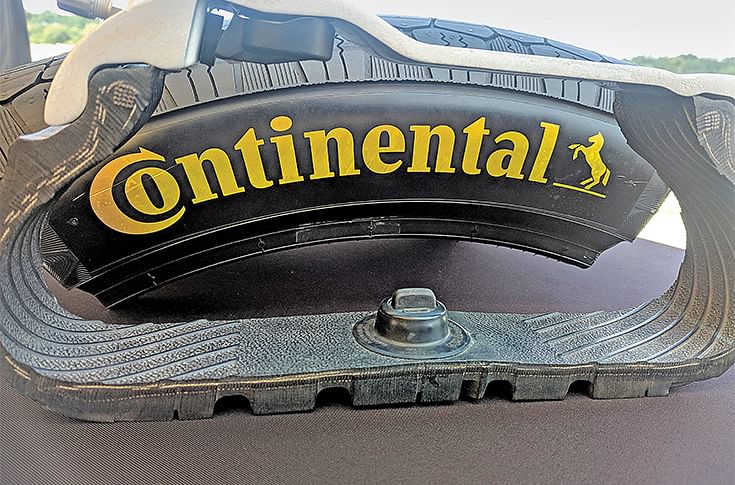
ContiSense can continuously monitor tread depth and tyre temperature with conductive rubber-based sensors and relay information to the driver or cloud
The technology can, for instance, warn a driver of hidden pedestrians or other vulnerable road users when turning. In addition to intelligent intersections, intelligent street lamps are also a valuable source of data for parking space management and traffic flow analysis. The intelligent lamps can collect data on traffic density along the road and communicate with the intelligent intersection. The data can be used for a range of purposes such as controlling signal changes at traffic lights to reduce vehicle emissions and stoppage times at intersections. The intelligent lamps also automatically regulate lighting intensity to save energy and reduce costs.
Natural 3D display
Continental is also looking to revolutionise the way displays are configured in vehicles. It is currently developing an innovative cockpit solution — natural 3D lightfield instrument cluster — in conjunction with Silicon Valley-based Leia. Lightfield displays are billed as the next-generation mediums, allowing not only the comfortable perception of 3D depth but also the rendering of highlights, sparkles and other complex light effects.
The technology at use is the diffractive lightfield backlighting technology which offers ultra-high resolution display screens, whereby light conductors with diffraction grating and nanostructures create a precise diffraction of light under the display panel, creating a natural 3D effect.
Passengers in the front and back seats can view the same 3D image from their seat positions. The 3D image produced by the lightfield display is made up of a total of eight perspectives of the same object that vary according to the point of view.
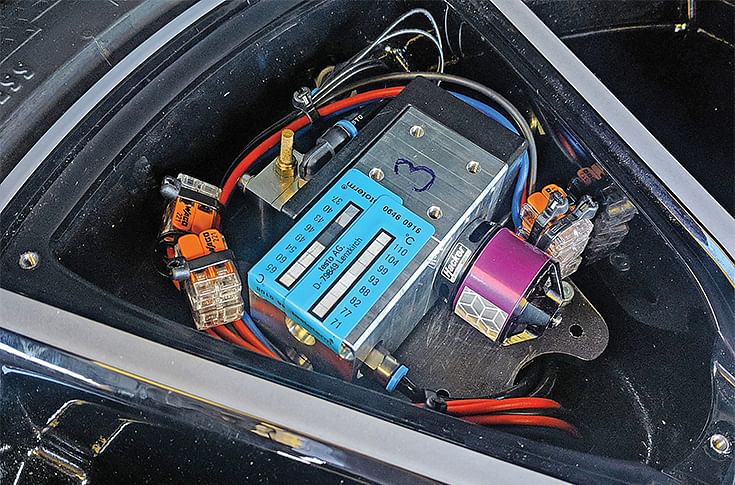
Continental showcased a micro-compressor mounted on the rim can deflate or inflate the tyre up to 3.5 bar to modify the contact patch.
Using Leia's cutting-edge nano manufacturing process suitable for large scale and mass volume production, the two companies have been able to bridge advanced lithography onto large-scale substrates with high yields and competitive costs. The collaboration further plans to leverage Continental's expertise in automotive information systems and sensors to augment Leia's content platform 'LeiaLoft' and enable car manufacturers and third-party developers to create holographic apps for the car of tomorrow.
Intelligent tyres
Continental showcased two new tyre concepts designed to provide a safe and comfortable driving experience in the future. ContiSense and ContiAdapt are designed to continuously monitor a tyre’s condition.
ContiSense is based on the development of electronic conductive rubber compounds that enable electric signals to be sent from a sensor in the tyre to a receiver in the car. Continuously monitoring both tread depth and temperature, the rubber-based sensors indicate if the measured value is above or below the predefined limit and triggers the system to immediately alert the driver. If anything penetrates the tread, a circuit in the tyre is closed, triggering an immediate warning for the driver before the tyre pressure starts to drop.
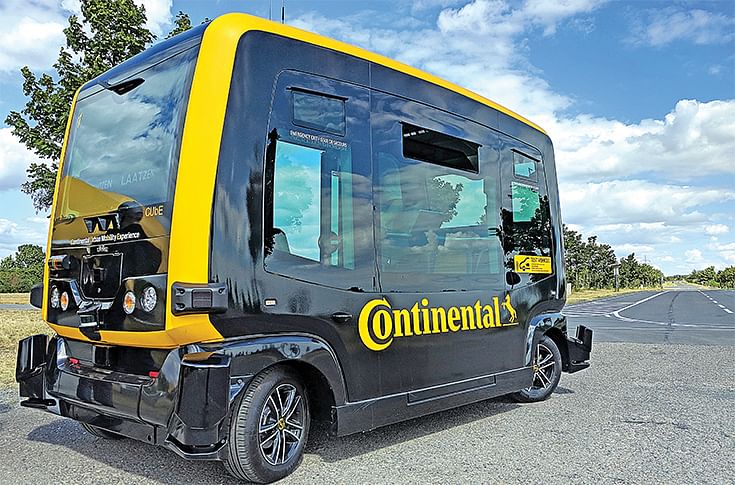
Cube uses Continental's special radar system developed for autonomous driving. Seven radars, each with a range of 200 metres, continuously monitor the vehicle environment.
In the future, the ContiSense system will feature additional sensors that can also be utilised individually, thus information about the road surface, such as its temperature or the terrain can be sensed by the tyre and passed on to the driver. The data will be transmitted directly to the vehicle or to a smartphone via Bluetooth.
ContiAdapt, on the other hand, combines micro-compressors integrated into the wheel to adjust the tyre pressure with a variable-width rim. The system can thus modify the size of the contact patch, which is a decisive factor under different road conditions for both safety and comfort. ContiAdapt allows perfect adaptation to four different conditions: wet, uneven surfaces, slippery and normal conditions. For example, a smaller contact patch combined with high tyre pressure makes for low rolling resistance, generating energy-efficient driving on smooth, dry roads. By contrast, the combination of a larger contact patch with lower tyre pressure delivers ideal grip on slippery roads. The system also permits very low tyre pressures of below one bar (14.5psi) to be set, which help ease driving on sandy off road tracks and while dune bashing.
The Cube effect
Continental is ready to drive another production launch later this year, which it says will be a landmark effort towards autonomous driving.
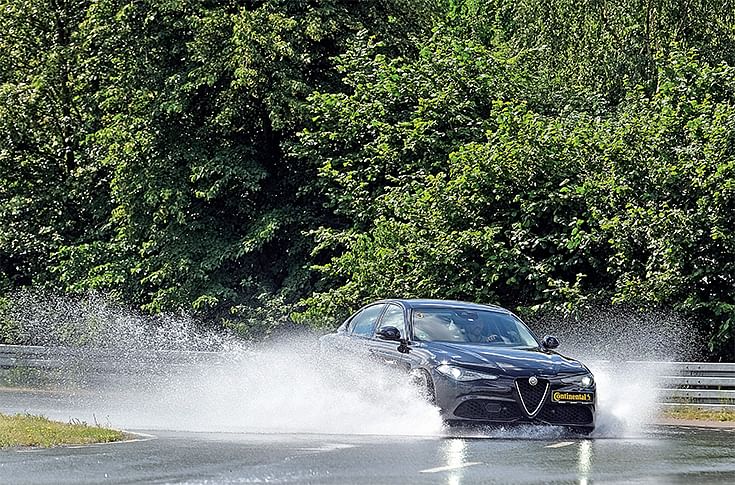
Predictive ESC anticipates wet surfaces via V2V communication and prevents vehicle run-offs at curves.
The autonomous EZ10 shuttle bus from the French company EasyMile, showcased as the Continental Urban Mobility Experience (CuBE), is the first to use a Continental radar system specially developed for driverless vehicles and now production-ready. A total of seven radar sensors, each with a range of up to 200 metres, continuously monitor the vehicle environment. With this data, the system adapts its driving strategy, avoids obstructions and therefore prevents dangerous traffic situations on the route ahead at an early stage. Since such autonomous shuttle buses will be mainly used in an urban environment, this system protects pedestrians and cyclists in particular.
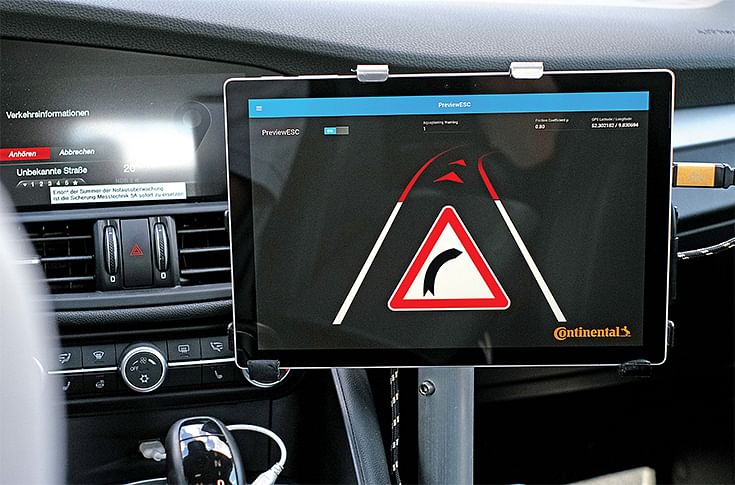
Driver assistance system uses radar sensors and cloud computing
Hailing the EZ10 on a mobile app and seeing it drive all the way up to me, with a welcome note, was nothing short of amazing. A short ride in the shuttle boosted my confidence in the capabilities of autonomous driving tech, albeit its ability to perform just as flawlessly in chaotic situations like those in India remains a big question mark.
Predictive ESC
Continental also expanded the use of cloud computing, radar and LiDAR systems to realise its vision zero – the goal of zero accident mobility with a very innovative predictive electronic stability control system. Powerful in-vehicle sensors form the basis for this technology and Continental is combining new radar and camera sensors with intelligent data processing in the cloud, which supports improved functions for assistance systems. The predictive stability control system warns the driver before a curve in the road if the vehicle is traveling too fast for the current road conditions and automatically brakes, if necessary, to adjust the vehicle’s speed. This too ensures greater safety and convenience.
A drive around the 1.5km-long ADAC test track in an Alfa Romeo Veloce, equipped with Continental's predictive ESC technology gave a first-hand experience of how innovative and life-saving this tech can prove to be, especially on unknown roads and highways, where a bend or turn could have a water patch and result in aquaplaning.
To put it briefly, Continenal Tech Show 2019, with its array of exhibits, gave a realistic picture of how far technology has progressed. A lot of it is focused around improving human lives on the roads and some active participation is all that it will take to bring it to benefit the users. The present is shifting to the future —and fast.
(This article was first featured in the July 15, 2019, issue of Autocar Professional)
RELATED ARTICLES
How Greater Consumer Responsiveness Helped Indian Brands Overtake Global Giants
Once overshadowed by global brands, Indian carmakers now lead the charge in SUVs, EVs, and safety.
From Rs 431 Crore Loss to Recovery: Inside TIL’s Comeback
New ownership charts ambitious turnaround for TIL, India's oldest crane manufacturer.
Why Toyota Is Building Its Carbon-Neutral Future Around India
A look inside the engineering logic driving the world’s largest carmaker as it pursues multiple routes to decarbonisatio...






 15 Aug 2019
15 Aug 2019
 19310 Views
19310 Views





 Prerna Lidhoo
Prerna Lidhoo


 Shahkar Abidi
Shahkar Abidi


